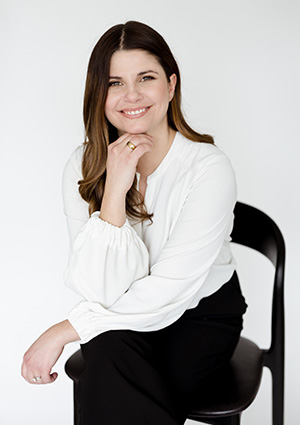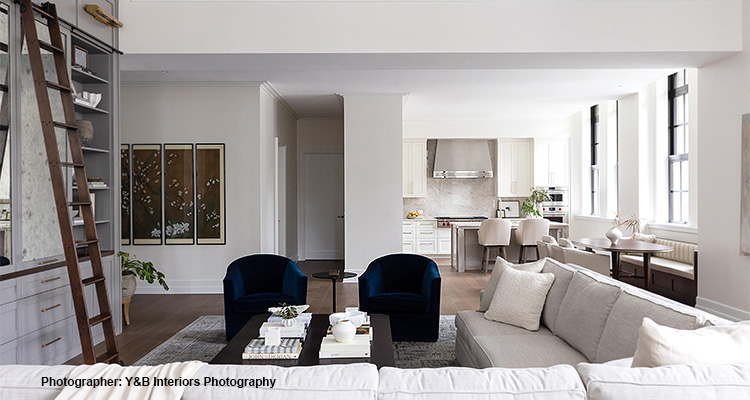A designer’s approach to historic interiors
With the evolution of design, there’s been a strong shift toward minimalism – editing pieces down to their simplest forms for mass production. And while there’s a lot of beauty and efficiency in that, I’ve always felt that something gets lost along the way. The handcrafted charm, the artistry, the imperfections that give an object soul, those things can’t be replicated. That’s why I believe it’s so important to preserve the historic elements in older properties. They add something rare and irreplaceable to a space: depth, character, and a connection to the past.

What draws me most to working with historic buildings is that sense of story embedded in the walls. There’s a soul to these spaces that speaks to a different era of craftsmanship and intention. When I take on a project in a historic home or building, I feel a deep sense of responsibility. I’m not there to overwrite what already exists, but rather, I’m there to be a steward of the past. That shapes my entire creative process. I design with reverence, always aiming to enhance the original narrative while introducing elements of comfort, function, and modern ease.
Materials and finishes
Living and working in Chicago, I’m surrounded by incredible architectural heritage – Gothic Revival, Prairie School, Art Deco, midcentury gems. That history influences everything I do. In my work, I look to create visual and material bridges including clean-lined furnishings next to original stone, preserved millwork within simplified layouts. A recent project of ours is in the historic Tribune Tower in Chicago. I tackled this space by embracing the ornate Gothic bones of the building while softening the interiors with quiet, contemporary layers that support modern life without competing with the architecture.
When I begin a project in a historic building, the first thing I do is assess what must be protected including stonework, plaster details, original moldings, and architectural framing. I consider how these elements shape the energy and flow of the space. Additionally, light is also a big factor: how it moves through the room, how we can enhance it without disrupting the integrity of the structure.
Working with the right partners is essential in preservation projects. I prioritize artisans and collaborators who understand subtlety and I celebrate people trained in traditional methods, like plasterwork, stone fabrication, and specialty woodworking. Preservation isn’t a linear process. It requires collaboration, adaptability, and sensitivity. I look for teams that understand that and are open to dialogue throughout.
When it comes to selecting materials and finishes, I often start by referencing what’s already there and photographing original details, making samples, and sourcing period-appropriate finishes. From there, I reinterpret those elements for modern use. I might take a traditional profile and adjust the scale or use a classic finish on a more contemporary silhouette. It’s all about honoring the past without being too literal.
Designing a residential space inside the Tribune Tower was truly wonderful. The building carries so much history. Its soaring ceilings, intricate stonework, and Gothic arches create a tone of grandeur. My role was to meet that grandeur with restraint – to allow the architecture to breathe. One of my favorite moments from that project is a custom dining table we designed. It features a richly grained wood top with a contemporary base. It doesn’t try to mimic the architecture, but it belongs in the space. That juxtaposition, old and new, weight and lightness, is at the heart of what I love about this work.
One of the biggest challenges we faced in the Tribune Tower was the scale of the space. Standard furnishings felt dwarfed next to the dramatic arches and soaring ceilings. We had to scale everything up in both proportion and visual weight. Custom furniture and carefully selected materials helped us strike the right balance – strong enough to hold their own, but quiet enough not to compete with the architecture. 
For me, incorporating modern elements into a historic space is all about balance. I choose pieces that feel like an ode to the past through their texture or craftsmanship but maintain a modern sensibility. In the Tribune Tower, clean-lined upholstery, aged brass accents, and natural materials created a soft counterpoint to the drama of the architecture. Every element was selected to enhance the dialogue between past and present.
Historic spaces have so much to teach us. As designers, we don’t always need to innovate. We need to observe. There’s wisdom in how these buildings were constructed: in their proportions, their materials, their lasting beauty. They teach us patience and perspective.
To anyone modernizing a historic home, my advice is to identify what’s essential; the bones, the materials, and protect them. Layer in modern comforts gradually, and always with scale and tone in mind. The best updates are the ones that feel like they’ve always belonged.
Success, for me, means that the space feels both timeless and current. It should honor its past without being confined by it. It should serve the needs of today while telling a larger story. If the home feels grounded, warm, and quietly sophisticated, I know we’ve done it right.
Right now, I’m especially excited about a project at the Lake Forest Showhouse, where we’re finishing the design of the primary suite. The home was originally reimagined by the legendary architect David Adler in the 1930s, and his influence is still so present. Designing within that legacy, especially in such an intimate space, was both an honor and a challenge. We embraced the architecture’s grace and elegance with a soft, tonal palette and contemporary furnishings that feel refined but relaxed. Every piece was chosen to respond to the scale and voice of the space, creating a calm, considered room that speaks to both past and present.
By Diana Wagenbach
www.studiowchicago.com
With a marketing degree from Loyola University of Chicago and furthering her education in interior design at the School of the Art Institute, Diana Wagenbach founded her namesake firm in 2020. Known for her thoughtful design, Diana works to create spaces that make life feel calm and inspired. She oversees all design projects to ensure they are a reflection of the client while incorporating the firm’s timeless and organic aesthetic.
